
Hungary is one of Europe’s oldest countries having been founded in 896. There is evidence of occupation in the area since 800BC.

Budapest
Budapest only became a city about 150 years ago when three cities (Buda, Pest, and Obuda) came together in 1873. Buda occupies the western bank of the Danube, while Pest is on the eastern bank (Obuda is a lump in the midst of all this). Once they came together there was a rapid advancement in both modernity and technology, however these were done under stringent town planning rules.
Once again, we were blessed with perfect weather. Upon arrival, we headed out for dinner to a funky little restaurant that had converted an old railway car into the restaurant. It was a traditional Hungarian restaurant, unlike the abundance of pizza and kebab restaurants that seem to have overrun Europe.






Our hotel was at the bottom of the hill on the West Bank of the Danube (broadly) underneath the Fisherman’s Bastion which is one of the must-see attractions. The current version was built in the 19th century as a lookout tower for the best panoramic views in Budapest. On the bastion are seven turrets to represent the seven Hungarian tribes who founded the present day country in 896. There did used to be real castle walls but the present day structure has never served as an actual fortification.







From the Bastion, you get amazing views over the city and down to the Chain Bridge and the Hungarian Parliament Building. Which were both lit up nicely late in the evening after our meal. This is actually a little odd for us. We tend to do all of our sightseeing through the day and then bathe and head out for dinner, crashing or zoning out soon afterwards.
The Széchenyi Chain Bridge was built in 1849 and was the first permanent bridge that connected Buda and Pest.



The Hungarian Parliament building is home to Hungary’s legislative body and the Holy Crown, as well as serving as the workplace of 199 MPs and their support staff of 741 people.
The building took 17 years (1885–1902) to build and has become the symbol of Hungary and its capital.
The dome height is 96 metres.
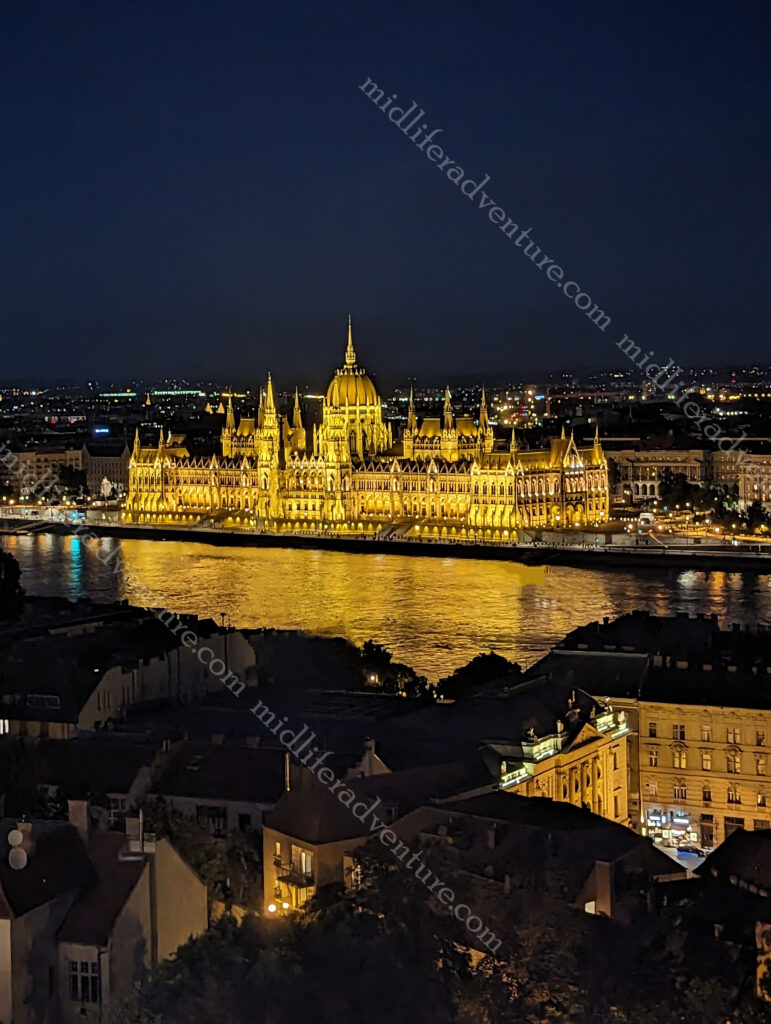
The Parliament House is amazing if only for its sheer size, the width at its broadest point is 123 metres and the wing that runs parallel to the Danube is 271 metres long. The period when it was built coincided with an major economic boom that also saw the building of the Heroes’ Square, Andrássy Avenue, Nyugati Railway Station and several bridges over the Danube. During this time Hungary also opened Europe’s first underground railway (metro).





A major attraction in Hungary is the existence of thermal baths. Budapest has the most thermal water springs of any other capital city in the world.
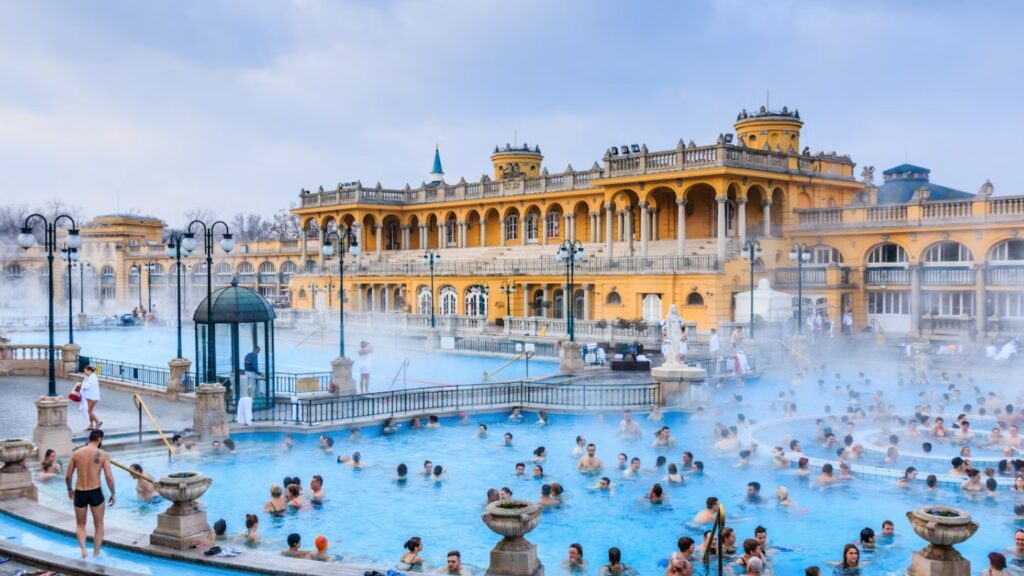
Some of the more famous and well-known ones in the city are the Szechenyi, Gellert, and Kiraly Baths. Across the country, there are more than 1,500 thermal spas.

High on the hill the Buda Castle can be found. The castle zone is huge and technically includes the Fisherman’s Bastion that we had explored the day before. It is home to the history museum, the National Gallery, Matthias church and much more.

Underneath the castle is an 800 year old labyrinth that is more like an underground city with narrow streets winding confusingly underneath the Buda Castle District.
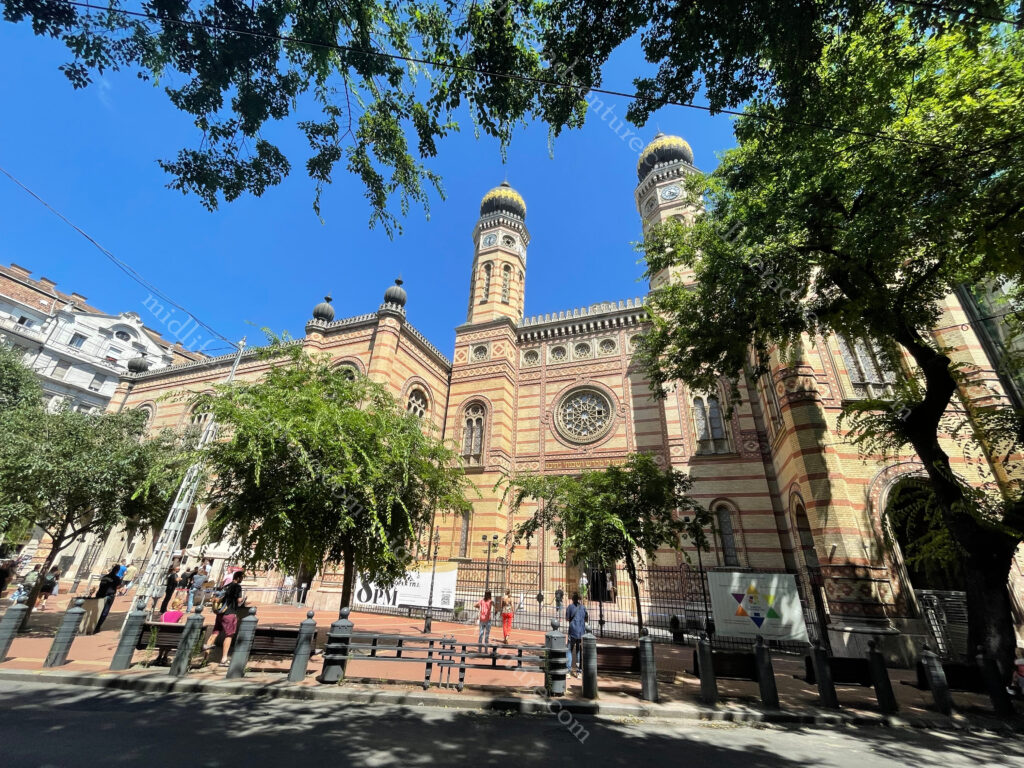
The Great Dohány Street Synagogue is the largest synagogue in Europe and the second largest in the world.
The Children’s railway was set up in the 1940s as a way to train communist children and still operates today. It is a train that is almost entirely run by children ages 10 to 14.

The children must complete a four-month training course to learn how to be conductors, inspectors, and workers. The only adults working there are the station master and the train drivers. The railway takes you on a 45-minute journey to the Buda Hills.
Heroes Square was closed when we were here. We could see it high on the hill from a distance but were unable to make the trek to see it up close.




Construction of St. Stephen’s Basilica began in 1851, in 1868 the cupola collapsed due to defects in materials and craftsmanship, after which works paused for more than a year. Issues and problems plagued its construction but in 1905 the church was finally dedicated. The height of the building is 96 meters.




The Hungarian State Opera House is in the centre of town. Construction began in 1875, funded by the city of Budapest and by the Emperor (Franz Joseph I of Austria-Hungary) it was opened to the public in 1884.




Shoes on the Danube is a memorial art installation that was installed in 2005.
Wiki tells me that it was done “to honour the Jews who were massacred by fascist Hungarian militia belonging to the Arrow Cross Party in Budapest during the Second World War.
They were ordered to take off their shoes (shoes were valuable and could be stolen and resold by the militia after the massacre), and were shot at the edge of the water so that their bodies fell into the river and were carried away”.
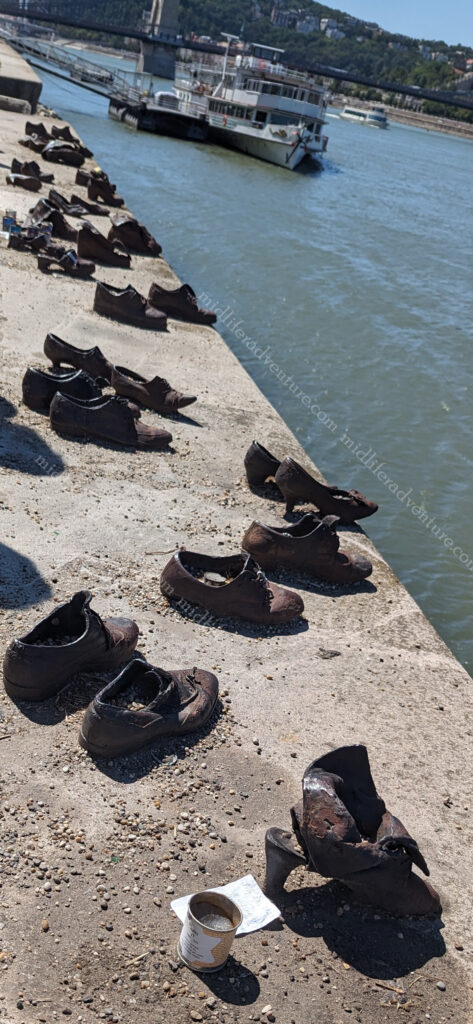
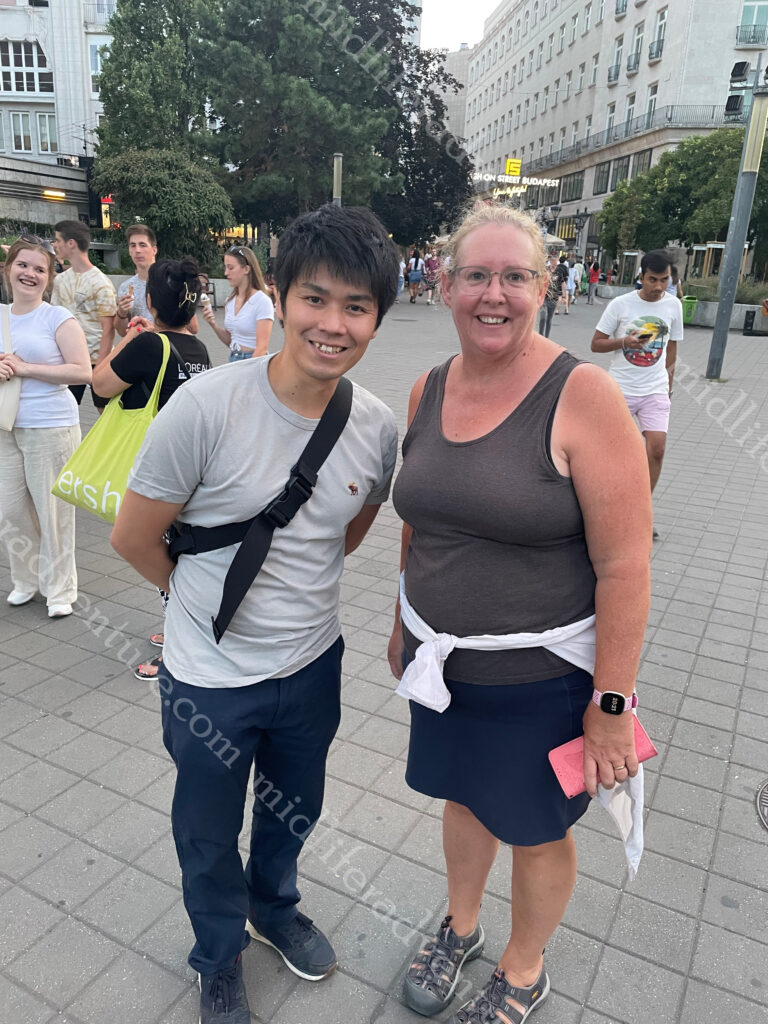
As is our way, we got chatting with the dude at the next table when we had dinner the first night in town.
His name was Akira (from Japan) and he had moved to Budapest, having studied in Prague and now worked in the tourism industry.
He offered to show us around (if we were interested) which of course we were.
So after we had done our day of sight seeing, we met Akira back at Parliament House and did a different version with an informed commentary. We saw some of the same things, but learned some important facts about them, we also saw things that we had obliviously walked past earlier that day.
As an example, after having coffee (well beer for us but coffee for Akira) at one of the two oldest cafe’s in town we wend down a rather unobtrusive and unremarkable set of stairs that we had ambled past. This was the metro line One, the first underground in Europe. It still ran and was heritage listed. While I knew that Budapest had the earliest underground, we had ridden them several times over the earlier days I just expected that it had kept up with the modern technology and did not expect the remnants to still be there let alone still functioning.



In doing my research I had also read about the stringent town planning rules but just accepted that they were and did not question why. Akira explained the importance of the dates. The city was founded in 896 (by the Magyars) and in 1896 Hungary celebrated the millennial anniversary of the Settlement with festivities held across the nation. As such 96 is an important number for the nation. If you think back to my earlier ramblings in this post, 96 is the height of the dome on Parliament House. It is also the height of St Stephen’s Basilica. The rules were set in place so that no building in the newly formed Budapest would be taller than these two buildings.
He also introduced us to the world of Hungarian porcelain, not a ususal pastime of mine but still interesting. We went to a smallish park near the middle of town that were the homes of the two most famous Hungarian porcelain makers (Zsolnay and Herend). Both of which had shops near the park and a fountain in the park highlighting their works.


We also meandered the streets and got the back story behind many of the buildings. But mostly, we got to chat to Akira about his life in Budapest and were able to get a real sense of what life was like living here and (previously) in Prague.





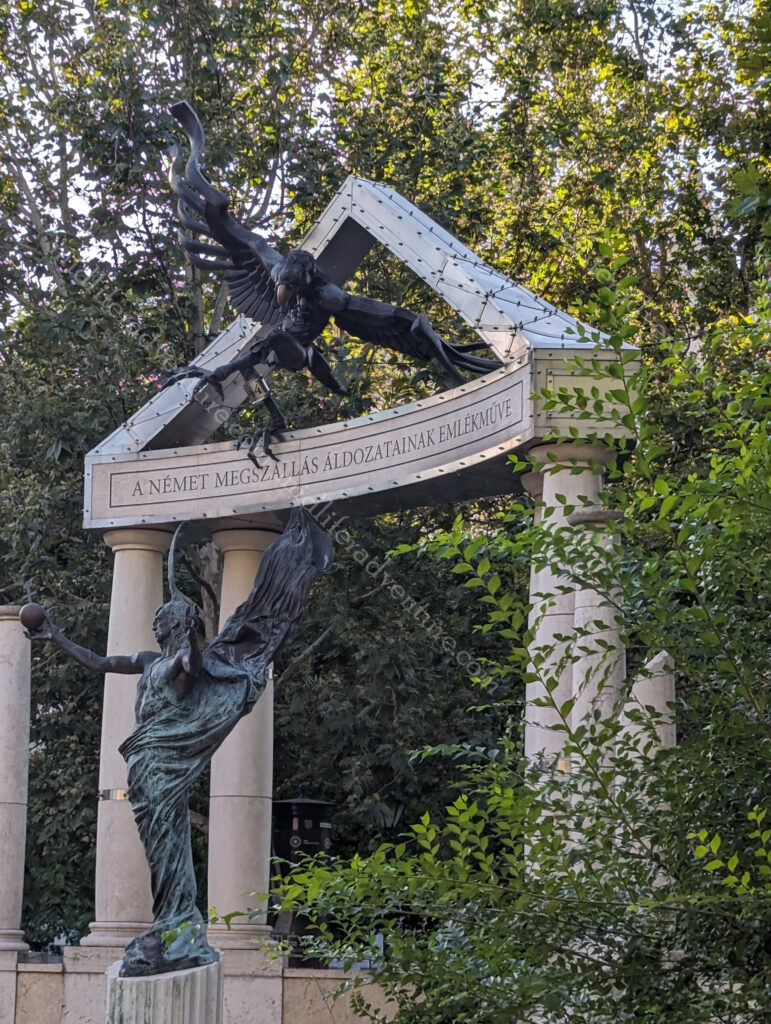

And in between all of the sights, there were the usual mix of very cool old buildings, statues, gargoyles and carvings that we randomly stumble across in our rambling.









We tried to offer Akira some money for his time and effort, but he would not hear of it. The enjoyment that we got from having a private tour cannot be underestimated and our gratitude was real. Let’s hope that he stays as one of our regular travel contacts an that at some point in the future, we may get to reciprocate.